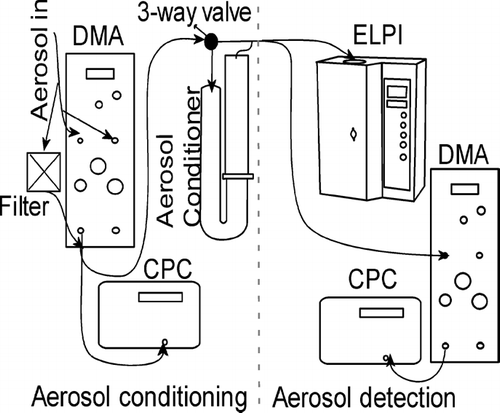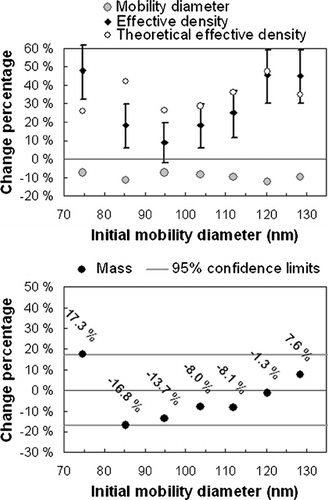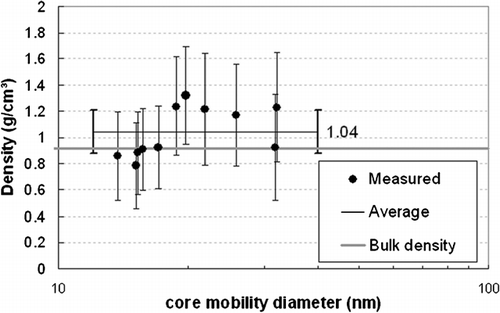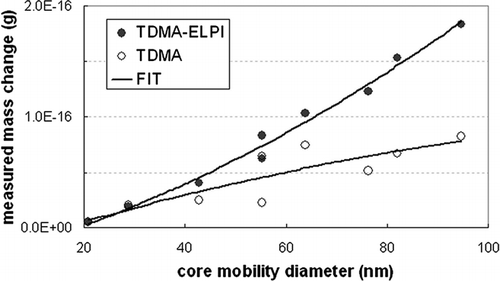Figures & data
FIG. 1 A schematic presentation of condensation on non-spherical particles. Negligible or no change in the mobility is observed until the voids of the particle are filled. Between (a) and (b) there is change only in the effective density and mass, whereas in (c) also the mobility diameter is increased.

FIG. 2 Measurement system setup, divided into aerosol conditioning and detection sections. The filter beside the DMA provides additional air to the measurement section instruments. Additionally, the sheath air for the DMA is filtered sample gas to maintain the vapor pressures and avoiding possible evaporation in the sample lines.

FIG. 4 The change percentages of the mobility diameter, effective density and theoretical effective density (above), and mass (below) in the silver agglomerate collapse experiment. Error bars present ± 5% error in measured effective densities.



